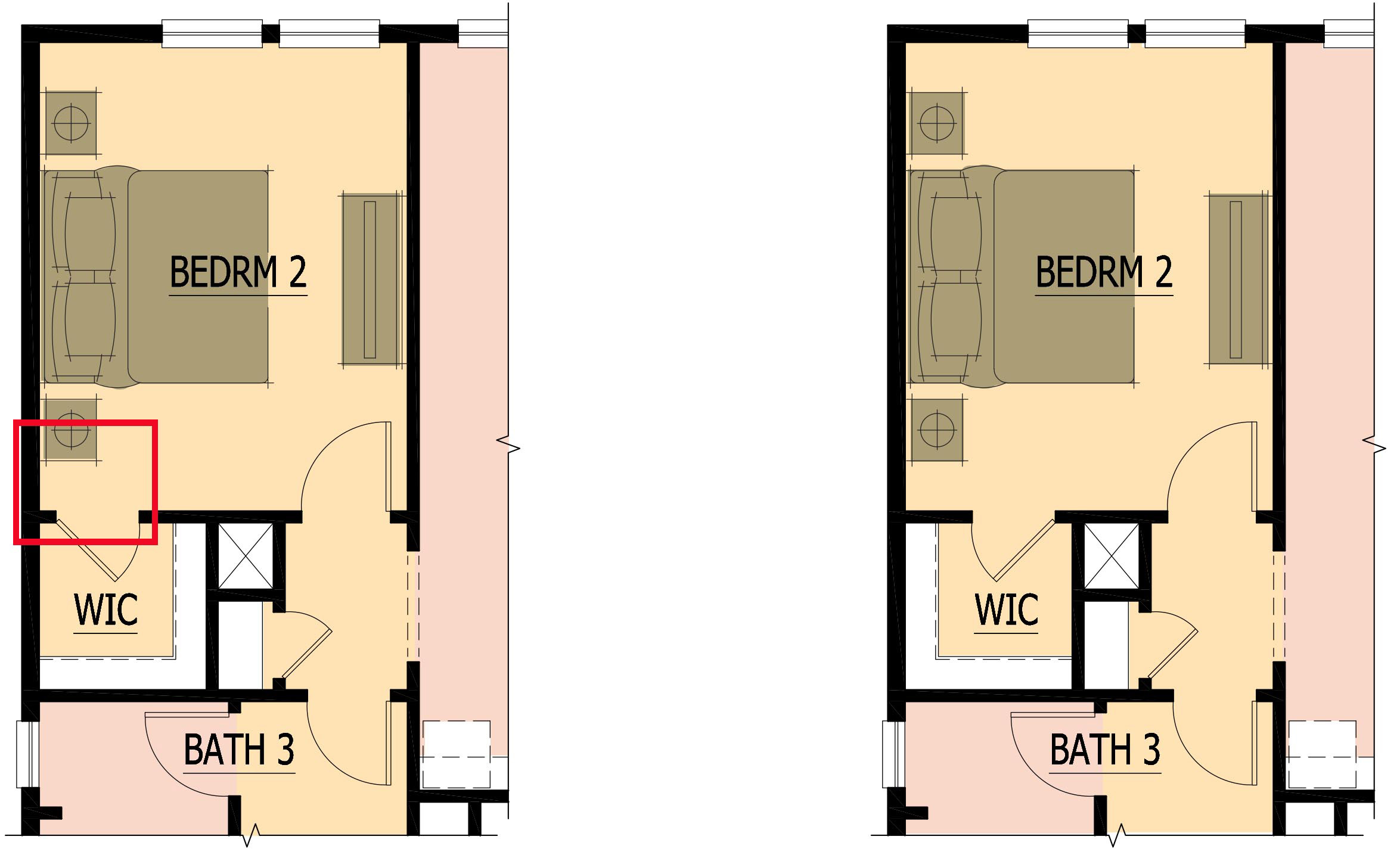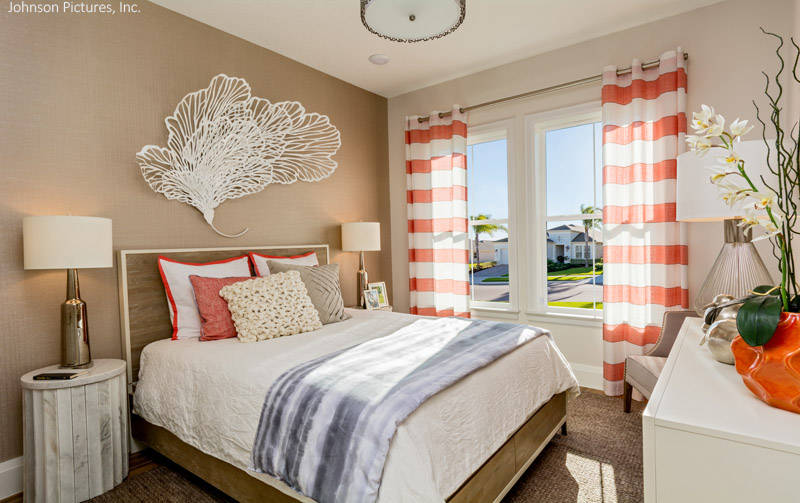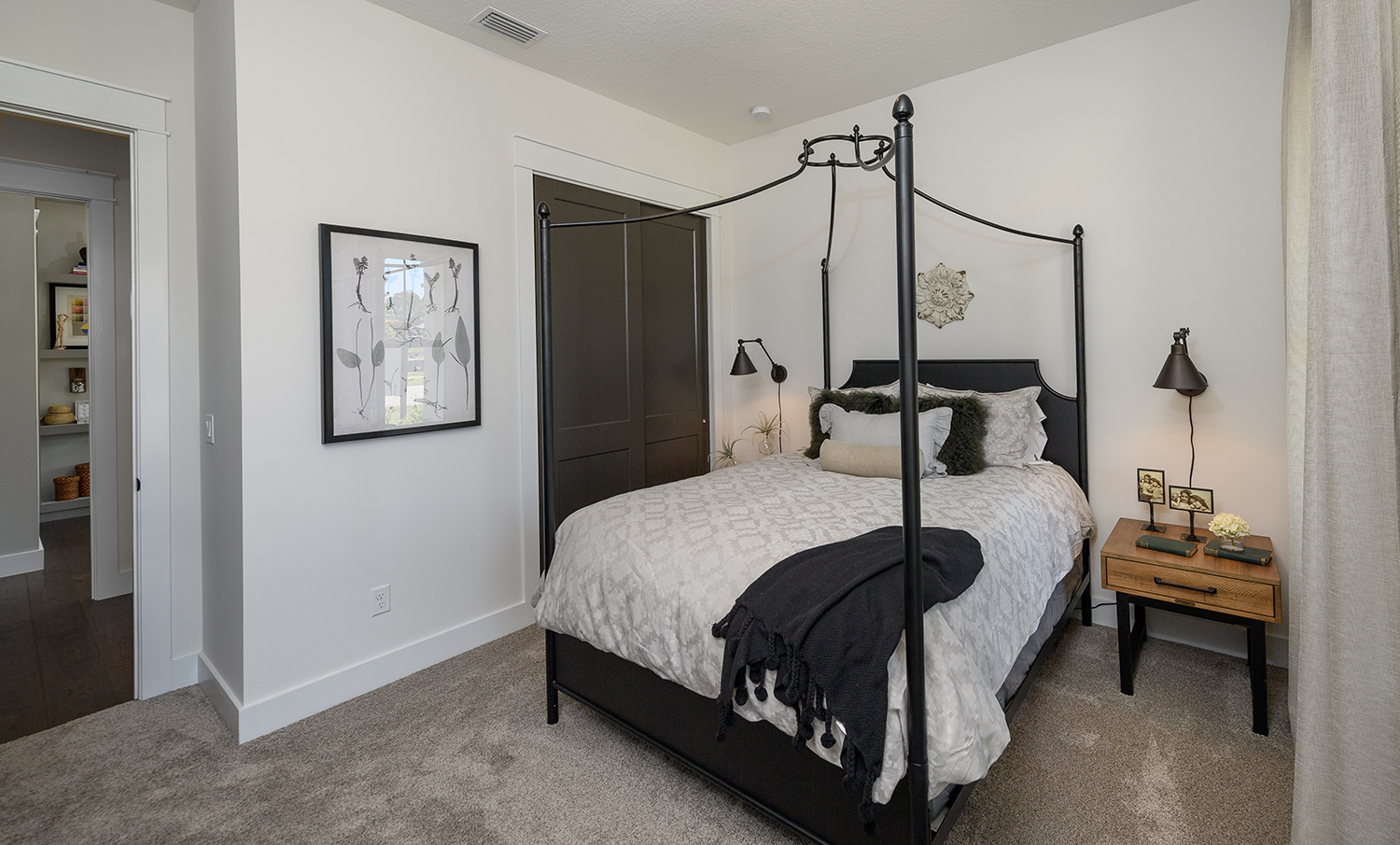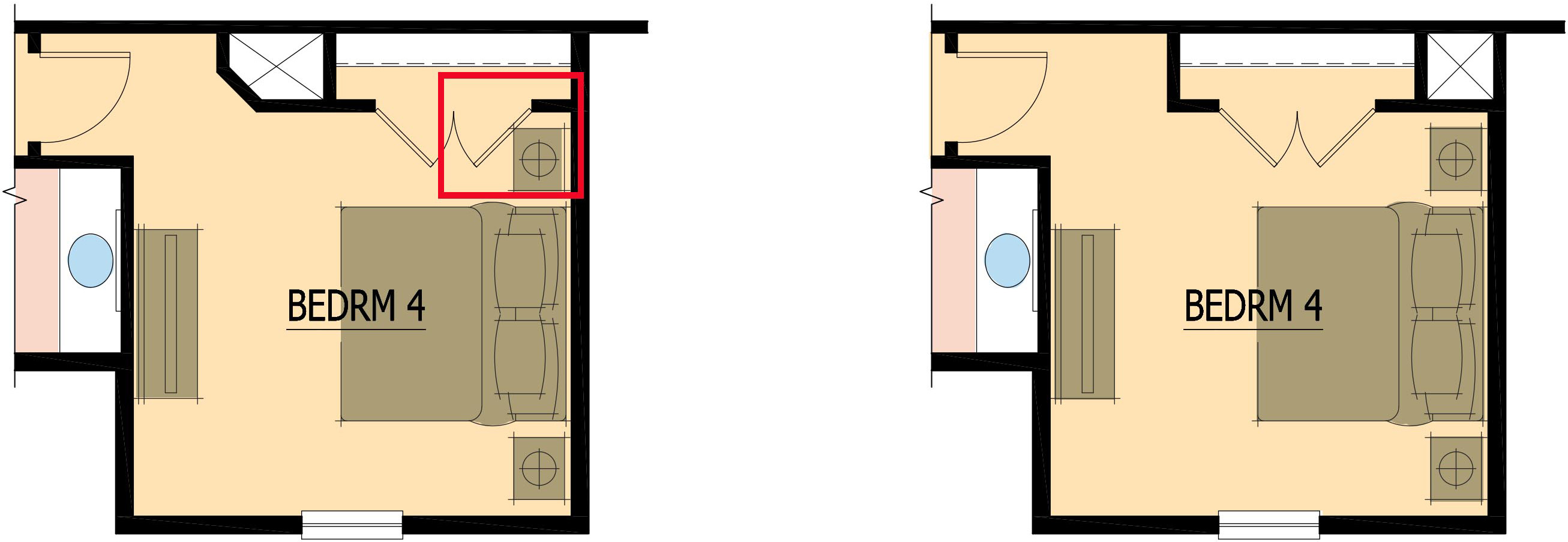I want to share a little nuance regarding the placement of closet doors in secondary bedrooms (translation: strip closets). The natural tendency is to center the doors in the closet, right? This method yields the best access to garments at either end of the closet. Even better, use larger doors for maximum access. Case closed, see you next week – WAIT! Not so fast!
Let’s take a moment and look at the impact those doors have on the bedroom’s furnishability.
But before we go there, let’s review. If you are an avid reader of my blogs (thank you!), you know each bedroom needs a bed wall and a dresser wall. Placing a strip closet directly across from the bed ruins your dresser wall. In our media-focused society, we now know there’s a TV on top of that dresser instead of a mirror. Okay, maybe not in the model home – but after the sale.
Bed Wall and Dresser Wall
To achieve the dresser wall across from the bed wall, our closets are off to the side of the bed. Let’s say we have a strip closet that is 7’ long. A pair of 30” doors leading to the closet yields a 5’ opening and only blocks 12” of clothes on either side of the opening.
But wait! Is the room even big enough for the doors? In a smaller bedroom, say 10’ by 11’, chances are the space between the bed and the closet is tight – or worse, you must slide the bed down to make room for the closet doors. Needless to say, that isn’t acceptable.
Night Stands
An obvious solution to the above is to use a pair of 2’ swing doors, which don’t pinch the space between the bed and closet. With these doors, you’re still only blocking 18” of clothes at either end of the closet. Now let’s add furniture to the bedroom. We want night stands on both sides of the bed. These pieces generally run 18” to 20” deep.
Those doing the math have figured out that we have 18” between the wall and the closet doors, so most night stands will fit – right? What about the trim around the closet door? If your night stand is in front of the trim, it looks wrong and makes the room feel small.
Why not offset the closet doors in the closets? If you start the doors 2’ from the corner of the room, any size night stand will fit.
A simple reconfiguration above demonstrates a far less awkward furniture layout in the secondary bedroom.
Below, moving the air duct allows the closet to be fully accessible.
Prepare for Push-back
A note of caution: This is easier said than done. You may receive push-back from team members and the homeowners. Beyond that, when producing the construction documents, the closet doors will end up being centered. Some CAD programs will even center the doors for you. Or when you do your frame walk, you (or someone on your team) will think the off-centered doors are a mistake and try to correct the doors. Even when the house is built, it isn’t until your decorator adds furniture that the placement makes sense. Again, this is where showing furniture on a floorplan pays off!
Communicate Your Vision
How will you communicate to your entire team, including the CAD tech, framer and drywaller that you deliberately don’t want the doors centered? Adding the dimension on the drawings is a great first step but if you have different construction crews, chances are this little nuance might be missed. I hope not.
Share this strategy with your sales team so they can point this out to potential buyers as they walk the home – especially an unfurnished spec home. This will heighten the buyer’s awareness on the issue and differentiate you from your competition. You become the more thoughtful and detail-oriented builder. Your homeowners will thank you for pushing through the strange looks you get. Good luck.
A secondary bedroom might not be the space that seals the deal with a home buyer. It can, however, be the space the breaks the deal if it fails expectations. Don’t let your rock star plan fall apart from something as simple as the bedroom closet!
Categorized in: Uncategorized
This post was written by Housing Design Matters





